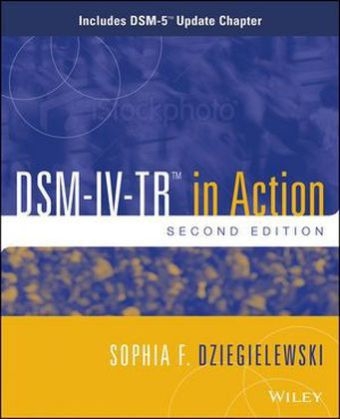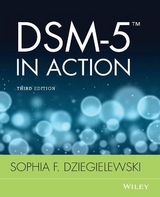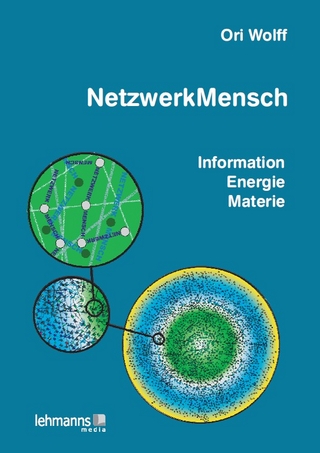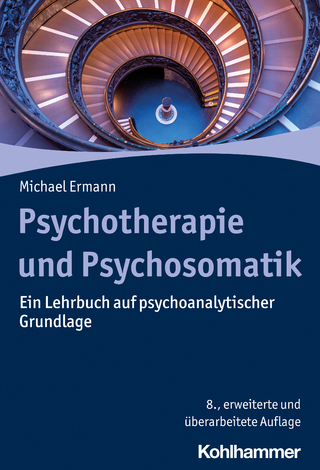
DSM-IV-TR in Action
John Wiley & Sons Inc (Verlag)
978-1-118-78477-8 (ISBN)
- Titel ist leider vergriffen;
keine Neuauflage - Artikel merken
The DSM is the primary tool mental health clinicians depend upon to diagnose psychopathology in their clients. DSM-IV-TR in Action brings the DSM to life by providing clear instruction on how to plan for an assessment, accurately diagnose clients, and prepare a comprehensive treatment plan. This book explores how to incorporate DSM-5 changes into the original diagnosis and treatment model and includes DSM-5 categories that correspond to each chapter. This is a must-have resource for mental health professionals and students in social work, counseling, psychology, and psychiatry.
SOPHIA F. DZIEGIELEWSKI is Professor and Associate Director for Research in the School of Social Work at the University of Central Florida, where she also serves as Chair of the University Institutional Review Board. She is also the Editor of the Journal of Social Service Research . She is the recipient of numerous awards, and supports her research and practice activity with over 120 publications, including seven textbooks, seventy-nine articles, numerous book chapters, and over 400 workshops and community presentations. Her research focuses on the areas of health and mental health. As a licensed social worker, she also remains active in clinical practice.
Preface xi Acknowledgments xv Quick Reference List xvii SECTION I Utilizing the DSM-IV-TR: Assessment, Planning, and Practice Strategy Chapter 1 Getting Started 3 Introduction 3 Beginning the Process 3 Making the Diagnostic Assessment: Tools that Facilitate the Assessment Process 4 Role of Social Workers and Other Mental Health Professionals 4 Development of the DSM Classification System: History and Reservations 6 Diagnostic Labels 13 Another Mental Health Assessment Measure 15 Professional Training in the Professional Counseling Fields 16 Summary 17 Questions for Further Thought 19 Chapter 2 Basics and Application 21 Utilizing the DSM-IV-TR in the Practice Setting 21 Working as Part of a Team: Multidisciplinary and Interdisciplinary Teams 22 Diagnosis and Assessment: Is There a Difference? 24 A Combination Approach: The Diagnostic Assessment 29 Completing the Diagnostic Assessment Process 32 DSM-IV-TR Alone Is Not Enough 35 Important Sections in the DSM-IV-TR 37 Culture, Age, and Gender-Related Information 38 Culture-Bound Syndromes 41 Diagnostic Assessment Factors Related to Age 44 Diagnostic Assessment Factors Related to Gender 46 Subtypes and Course Specifiers 49 Use of the Principal and Provisional Diagnosis 50 Use of Not Otherwise Specified 51 Summary 53 Questions for Further Thought 54 Chapter 3 Documentation and the Multiaxial Diagnostic Assessment 55 Introduction to the Multiaxial Assessment System 55 Axis I and Axis II: Multiaxial Assessment System 59 Axis II: Application of the Defense Mechanisms 71 Axis III: The Multiaxial Assessment System 78 Axis IV: The Multiaxial Assessment System 86 Axis V: The Multiaxial Assessment System 87 Ethical and Legal Considerations 96 Pulling It All Together: Use of the Multiaxial System 96 Summary 98 Questions for Further Thought 99 Chapter 4 Applications: Beyond the Diagnostic Assessment 101 Sophia F. Dziegielewski and RuthAnne Van Loon Documentation, Treatment Planning, and Practice Strategy 101 Treatment and Intervention Planning 110 Developing the Treatment Plan 113 Selecting an Intervention Framework 117 Practice Strategy and Application 120 Types of Time-Limited Therapy in Mental Health Practice 124 Summary 132 Questions for Further Thought 135 SECTION II Applications: Selected DSM-IV-TR Disorders Chapter 5 Overview of Selected Childhood Disorders: The Disruptive Behavior Disorders 139 Sophia F. Dziegielewski and Shirleyann Amos Children Are Not Little Adults 139 Childhood and Adolescent Disorders: Assessing Mental Health Factors 143 Attention-Deficit Hyperactivity Disorder 145 Oppositional Defiant Disorder and Conduct Disorder 150 Conduct Disorder 151 Summary and Future Directions 173 Chapter 6 Selected Eating Disorders in Children and Adults 177 Sophia F. Dziegielewski, Janice L. Ricks, and Janet D. Murray Eating Disorders in Children: Brief Overview and Criteria 177 Selected Childhood Eating Disorders: Assessment and Diagnosis 178 Eating Disorders in Adults 181 Summary and Future Directions 205 Chapter 7 Substance-Related Disorders: Alcohol and Other Drugs 207 Carmen P. Chang-Arratia and Sophia F. Dziegielewski Introduction to Diagnostic Classification and Definitions for Substance-Related Disorders 209 Theories and Etiology of Alcohol Use Disorders 216 Risk Factors and Characteristics 220 Completion of the Diagnostic Assessment 221 Treatment Planning, Implementation, and Evaluation 229 Intervention Strategies: Models and Treatment Modalities 233 Integrated Motivational Enhancement Therapy and Motivational Enhancement Catalyst: Brief Interventions 238 Integrated Approach: Implications for Practice 241 Misuse of Prescription Medications and Psychotherapeutic Drugs: An Emerging Problem 244 Summary and Future Directions 249 Chapter 8 Schizophrenia and the Psychotic Disorders 251 Sophia F. Dziegielewski, Shirleyann Amos, and George Jacinto Introduction 251 Schizophrenia and the Psychotic Disorders 251 Understanding Individuals Who Suffer from the Psychotic Disorders 252 Overview of Schizophrenia and the Primary Psychotic Disorders 253 Differentiating among Brief Psychotic Disorder, Schizophreniform, and Schizophrenia 259 Factors Related to Schizophrenia 261 DSM-IV-TR and the Definition of Schizophrenia 266 Differential Diagnostic Considerations 266 Schizophrenia and Factors for Consideration in the Diagnostic Assessment 267 Application of the Multiaxial Diagnostic System 268 Treatment Planning and Intervention Strategy 273 Summary and Future Directions 283 Chapter 9 Selected Mood Disorders 285 Introduction 285 Overview of Mood Disorders 286 Clinical Depression and the Unipolar Disorders 289 The Depressive Disorders and the Diagnostic Assessment 289 Endogenous and Exogenous Depression: Making a Distinction 291 Completing the Diagnostic Assessment for the Unipolar Mood Disorders 292 Treatment for the Unipolar Disorders 296 DSM-IV-TR and the Definition of Bipolar Disorders 299 Diagnostic Assessment in Adults with Bipolar Disorder 303 Bipolar Disorder in Childhood and Adolescence 313 Treatment Strategy for the Bipolar Disorders 322 Summary and Future Directions 326 Chapter 10 Anxiety Disorders 329 Carmen P. Chang-Arratia and Sophia F. Dziegielewski Introduction 329 DSM-IV-TR Classification and Definition for the Anxiety Disorders 330 Theories and Etiology of Anxiety Disorders 336 Obsessive-Compulsive Disorder 338 Posttraumatic Stress Disorder 350 Intervention Strategies 357 Models to Treat Anxiety Disorders 360 Integrated Approach 362 Summary and Future Directions 362 Chapter 11 Delirium, Dementia, and Amnestic and Other Cognitive Disorders 365 Carmen P. Chang-Arratia Introduction to Diagnostic Classification and Definitions for Cognitive Disorders 366 Theories and Etiology of Cognitive Disorders 370 DSM-IV-TR: Definition of Delirium 373 Completion of the Diagnostic Assessment 376 Delirium: Treatment Planning, Implementation, and Evaluation 383 DSM-IV-TR: Definition of Dementia 384 Completion of the Diagnostic Assessment 387 Dementia: Treatment Planning, Implementation, and Evaluation 393 Intervention Strategies 397 Integrated Approach 403 Summary and Future Directions 404 Chapter 12 Selected Sexual Disorders 407 Gary Dick and Sophia F. Dziegielewski Introduction 407 Overview of the Sexual Dysfunctions: Orgasmic and Sexual Desire--Related Disorders 408 Orgasmic Disorders 409 Assessment and Treatment of the Female and Male Orgasmic Disorder 412 Sexual Desire and Arousal Disorders 420 Assessment and Treatment of the Sexual Desire and Arousal Disorders 425 Completing the Diagnostic Assessment 426 Selected Assessment Scales and Methods for Treating the Sexual Disorders 430 Overview of Treatment Methods for the Sexual Disorders 436 Summary and Future Directions 437 Chapter 13 Personality Disorders 439 Sophia F. Dziegielewski and George Jacinto Overview 439 Personality Disorders as Defined within the DSM 439 What Is a Personality Disorder? 440 Borderline Personality Disorder 459 Summary and Future Directions 473 Chapter 14 DSM-5TM Update 475 Introduction 475 The DSM and the ICD: The Bibles of Mental Health 475 So What About Billing? 477 DSM-5: Supporting the Changes 478 DSM-5: Three Sections 479 Overview: Section I 480 Overview: Section II 486 Delirium, Dementia, and the Cognitive Disorders 508 Selected Sexual Disorders 510 Personality Disorders 510 Section III 513 Conclusion 514 Appendix Quick References: Criteria and Treatment Plans Utilizing DSM-IV-TR 515 References 537 About the Author 575 Author Index 577 Subject Index 589
| Erscheint lt. Verlag | 18.2.2014 |
|---|---|
| Verlagsort | New York |
| Sprache | englisch |
| Maße | 189 x 233 mm |
| Gewicht | 1050 g |
| Einbandart | Paperback |
| Themenwelt | Geisteswissenschaften ► Psychologie ► Klinische Psychologie |
| Medizin / Pharmazie ► Medizinische Fachgebiete ► Psychiatrie / Psychotherapie | |
| Naturwissenschaften ► Chemie | |
| ISBN-10 | 1-118-78477-4 / 1118784774 |
| ISBN-13 | 978-1-118-78477-8 / 9781118784778 |
| Zustand | Neuware |
| Informationen gemäß Produktsicherheitsverordnung (GPSR) | |
| Haben Sie eine Frage zum Produkt? |
aus dem Bereich



